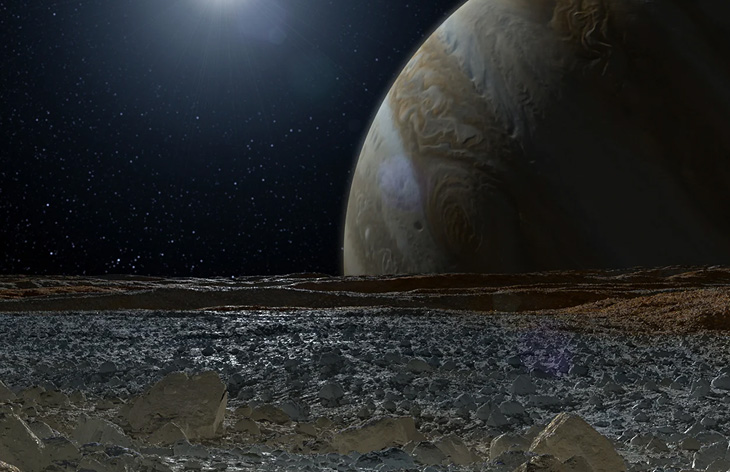Jupiter’s moon Europa has the highest expectation of life. It has been found that there is an ocean on the surface of the frozen moon. There are indications which shows that this sea is hot and salty. It also contains chemicals with potential for life.
New research suggests that the Moon is pulling oxygen under its icy shell, where normal life may be likely to exist. Whether life can exist in the ocean on the surface of Europa is a matter of debate. Until NASA sends the Europa Clipper there, then this debate will end. Scientists are studying different aspects of Europa. The availability of oxygen is a big question. The most important substance for life is water. There is a lot of water on the surface of Europa. Compared to the Earth’s oceans, there is more water there.
It also contains essential chemical nutrients. Energy is also essential for life. Europa’s energy source is Jupiter, which keeps its interior warm and prevents the ocean from freezing. There is also oxygen on the surface of the frozen moon, which is another sign of the possibility of life. When sunlight and charged particles from Jupiter collide with the surface of the Moon, oxygen is formed. But Europa’s thick ice sheet creates a barrier between oxygen and the ocean. Europa’s surface is frozen, so any life would have to live in its vast ocean.
According to a new research, salt water present in Europa’s icy shell can carry oxygen from the surface to the ocean. This research paper has been published in the journal Geophysical Research Letters. Its author is Mark Hesse, a professor in the UT Jackson School of Geosciences Department of Geological Sciences. These shiny water pools are present in the shell at places where some of the ice melts due to the convection current in the ocean. The photogenic areas of Europa (Chaos terrain) are built on top of these pools. They cover about 25 percent of the frozen surface of Europa. Scientists think that Europa’s ice sheet is about 15 to 25 kilometers thick.
The surface of Europa is very cold. At the poles of the Moon, the temperature never exceeds minus 220 degrees Celsius. It has been said in the study that about 86 percent of the oxygen present on the surface of Europa is carried to this sea.
The researchers’ model suggests that the oxygen-laden ocean on Europa is similar to Earth’s. But the question is, can there be life under the ice? “It’s also exciting to think of any living aerobic organisms living under the ice,” said Steven Vance, a scientist at NASA’s Jet Propulsion Laboratory (JPL) and supervisor of its Planetary Interiors and Geophysics Group.

![Buddha Purnima 2025 [TKB INDIA]](https://topknowledgebox.com/iphaphoo/2025/05/12052025-150x150.jpg)
![YouTube is about to turn 20, the company announced many big features [TKB Tech]](https://topknowledgebox.com/iphaphoo/2025/04/28042025-150x150.jpg)
![Basant Panchami 2025: Know the correct date and auspicious time [TKB INDIA]](https://topknowledgebox.com/iphaphoo/2025/01/31012025-150x150.jpg)

![Amazing feature of WhatsApp, you will be able to reply without listening to the voice message[TKB Tech]](https://topknowledgebox.com/iphaphoo/2024/11/24112024-150x150.jpg)





More Stories
The color of rivers in Alaska turned orange, scientists are surprised by this unknown change [TKB Science]
Asia’s largest liquid mirror telescope installed in Nainital, will reveal the secrets of space [TKB Science]
Powerful earthquake in New Zealand, intensity was 7.0 on Richter scale [TKB Science]